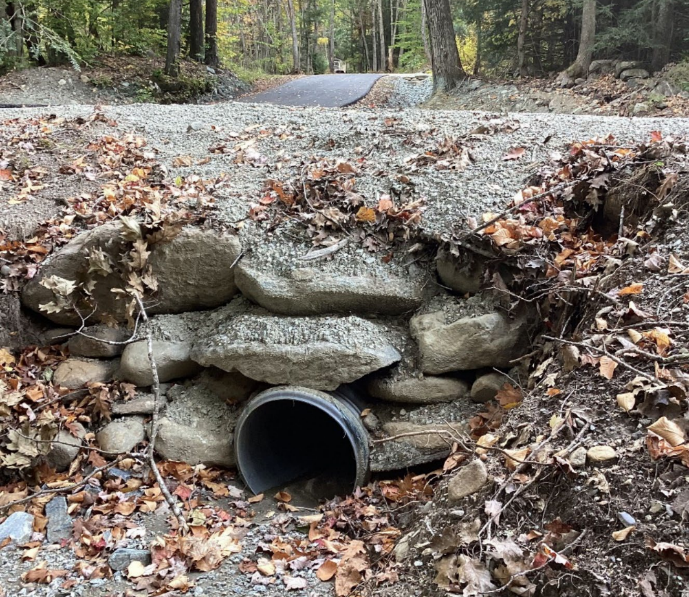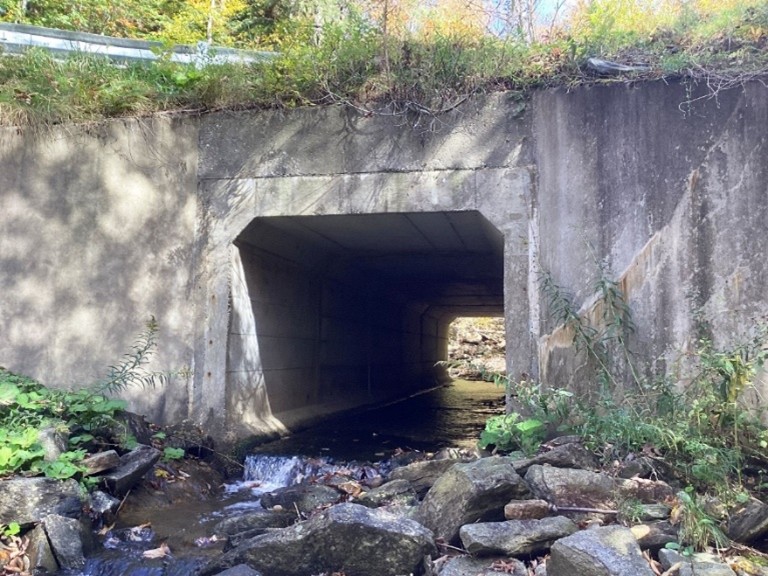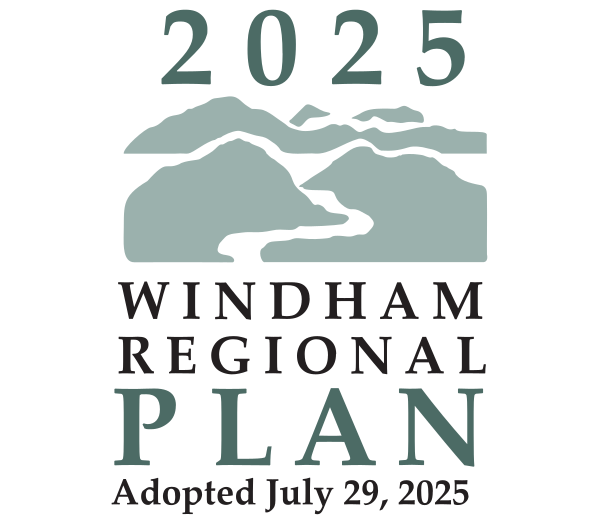Transportation
Transportation Resiliency
The transportation system in the Windham Region is under increasing threat from changing, increasingly unpredictable weather patterns impacting Vermont and the United State as a whole. We have seen the devastating impacts of these storms in recent years, including the July 2023 flood emergency, the March 2023 winter storm, the July 2021 storms, and Tropical Storm Irene in 2011. These events caused billions of dollars of damage, isolated residents from essential services, and required extensive and costly repairs that in some cases took months of labor from state and municipal highway crews. Ensuring that our transportation infrastructure is resilient and able to mitigate the impacts of increasingly severe storms is central to the safe, efficient function of the network.
The transportation network in rural Vermont is uniquely vulnerable to the impacts of severe weather. Much of our road network is located along steep slopes, oftentimes directly adjacent to waterways, and is subject to intense run off and in some cases landslides during severe storms. This washes out the roadways, oftentimes making them impassable, and transports large amounts of harmful sediment into our waterways. Our unpaved roadways are particularly vulnerable to damages. Dirt roads are more often located in remote areas and challenging terrain than paved roads, and are therefore subject to more intense run off during storms and thus more prone to wash outs.
Substantial improvements to our transportation infrastructure are needed to improve resiliency. This includes improved ditching, properly sizing culverts, and incorporating best practices when constructing road base and crown. The Windham Regional Commission works closely with our towns in implementing these improvements, aiding in evaluating current conditions and vulnerability, identifying potential projects, and applying for and implementing grant funded improvement projects.
STORMWATER MANAGEMENT
Culverts are an important and often overlooked piece of the larger transportation network and ecology of the region. Culverts are critical infrastructure that move our rivers and streams underneath the road network, ensuring that riparian corridors can flow naturally with as limited an impact on our transportation system as possible. Each town owns and maintains hundreds of culverts spread across their roads, and the installation and maintenance of culverts represents a substantial and increasing cost for the Windham Region.

Photo Credit: WRC
Proper culvert sizing and alignment is critical to reducing the impact of stormwater on our roadways. Culverts that are undersized or misaligned are prone to failure during major storms as high-water levels can cause the stream to overtop the structure, leading to wash outs, especially on gravel roads. Undersize culverts are also prone to blockage from woody debris filling the inlet and preventing the continued flow of water culvert, also contributing to culvert failure. Wash outs are major and expensive damages to town highways, they put large amounts of sediment and road materials into our waterways, endangering the health of the aquatic ecosystem, and in severe instances can cut of sections of the road network entirely, isolating residents and limiting access for emergency vehicles. While these impacts are not as dramatic or expensive as the damages from major rain events, they still have a significant cumulative impact on water quality and the sedimentation of our waterways.
It is important to the overall resiliency of our transportation infrastructure that culverts are large enough to accommodate high water events consistent with the Agency of Transportation Hydraulics Manual Standards. In addition to these standards, best practices also include ensuring that all culverts are properly aligned with the natural course of the stream channel and that the bottoms of culverts simulate a naturalistic environment as best possible.
Culverts are also critical to the overall aquatic ecology of the region. Properly constructed culverts allow fish and other aquatic animals to move freely through the environment with minimal conflict with the transportation system, preserving the natural character of Vermont and supporting healthy aquatic animal populations. This in turn supports recreation and the recreation economy in the region, ensuring that fish populations are healthy and widespread to support fishing. Aquatic animal passage should be considered when making decisions about culverts and other structures in our waterways.
Responsibility for driveway culverts is another challenge that many towns have grappled with in recent years. They are most often located within the town’s right of way; however, they may be privately owned depending on the policy of the municipality. When undersized or improperly installed, driveway culverts can contribute to significant issues with drainage and washouts. Local policies on driveway culverts vary substantially. The Windham Regional Commission recommends that all towns in the region adopt formal language related to driveway culvert responsibility to minimize conflict and improve the overall resiliency of our transportation system.

Photo Credit: WRC
Vermont made significant changes to standards and best practices related to stormwater management and transportation infrastructure in the wake of Tropical Storm Irene. Most relevant is the Municipal Roads General Permit. Reissued in 2023, the MRGP requires towns to bring hydraulically connected road segments up to state standards for stormwater infiltration in order to mitigate impacts of future major storm events. The scope of this work most often includes upsizing culverts as well improving ditching on town highways. The State has required that towns bring all segments classified as “very high priority” into compliance by 2028 and that hydraulically connected roadways be brought up to MRGP standards by 2036.
Increases in the costs of culverts present a substantial challenge to the implementation of the policies outlined above. The cost of replacing existing culverts with larger structures is often beyond the financial capacity of already strained town highway budgets. Several federal and state grant funding sources are available to help towns offset these costs, including the VTrans Town Highway Structures, Grants in Aid, Better Roads, Transportation Alternatives and Municipal Highway and Stormwater Mitigation programs.
IMPACTS OF A WARMING CLIMATE
The general warming trend the Windham Region has experienced in recent decades has affected the overall function of our transportation system. Historically, towns could rely on a hard freeze for several months of the year, and gravel roads generally froze from early December to Mid-March before the spring thaw and the onset of mud season. This freeze created favorable conditions for gravel road maintenance, with towns able to plow and sand roads on top of a solid frozen base.
Increasingly, winters have warmed in the region to the point where a solid winter freeze has been replaced by a continuous freeze-thaw cycle throughout the winter months. Mud has become a serious issue for town highways outside of the normal late March-April mud season, and unpaved roads increasingly experience mud season-like conditions throughout the winter months. This puts considerable strain on our local transportation infrastructure, making winter travel more difficult for visitors and residents and substantially raising sand and gravel, as well as labor, costs for towns. As muddy roads have become increasingly common during the winter months and our summers have gotten wetter, dealing with mud is more important now than ever for the overall function of our town highway infrastructure. Furthermore, the combination of muddy winter roads and snow storms has resulted in substantial damage to our roadways, as well as the health of our rivers and streams, from the large amounts of sediment that was plowed up and transported into waterways. Improved ditching is the primary tool available to towns to combat the impacts of mud. Properly constructed, stone lined and planted ditches improve drainage and collect sediment, more quickly drying out our dirt roads and trapping run off related sediment before it enters our waterways.
SAND AND GRAVEL MATERIALS
Finally, sand and gravel costs have increased dramatically for towns in the Windham Region in recent years and have become a substantial burden on town highway budgets. The recent closure of several sand and gravel pits in the region has caused many towns to truck in aggregate from greater distances, leading to a substantial increase in transportation costs. Furthermore, increased demand at the smaller number of regional aggregate suppliers coupled with significant challenges in permitting and approving new or expanded pits at both the State and Local level has driven up prices significantly even without factoring in increased transportation costs. This is a major concern for our towns.
